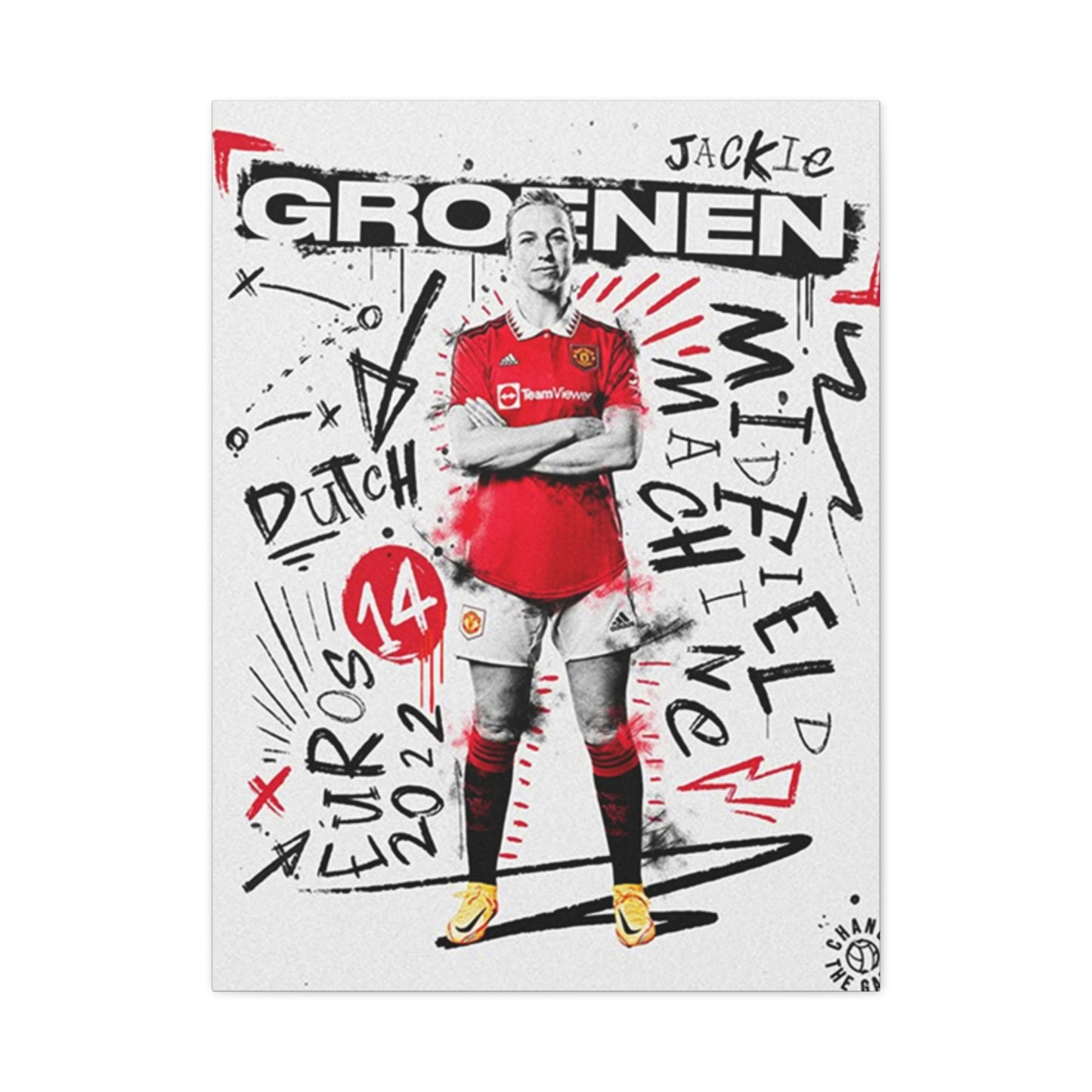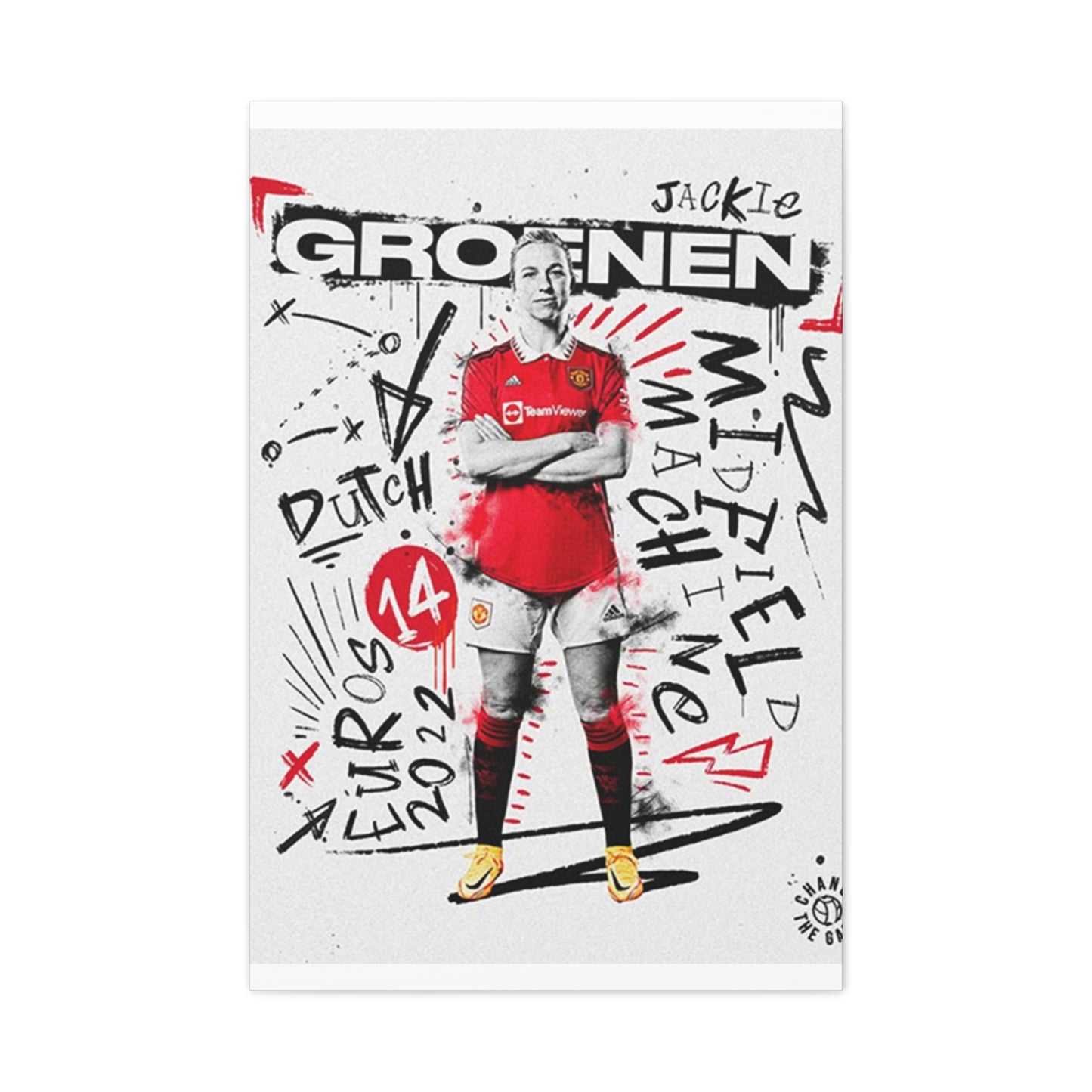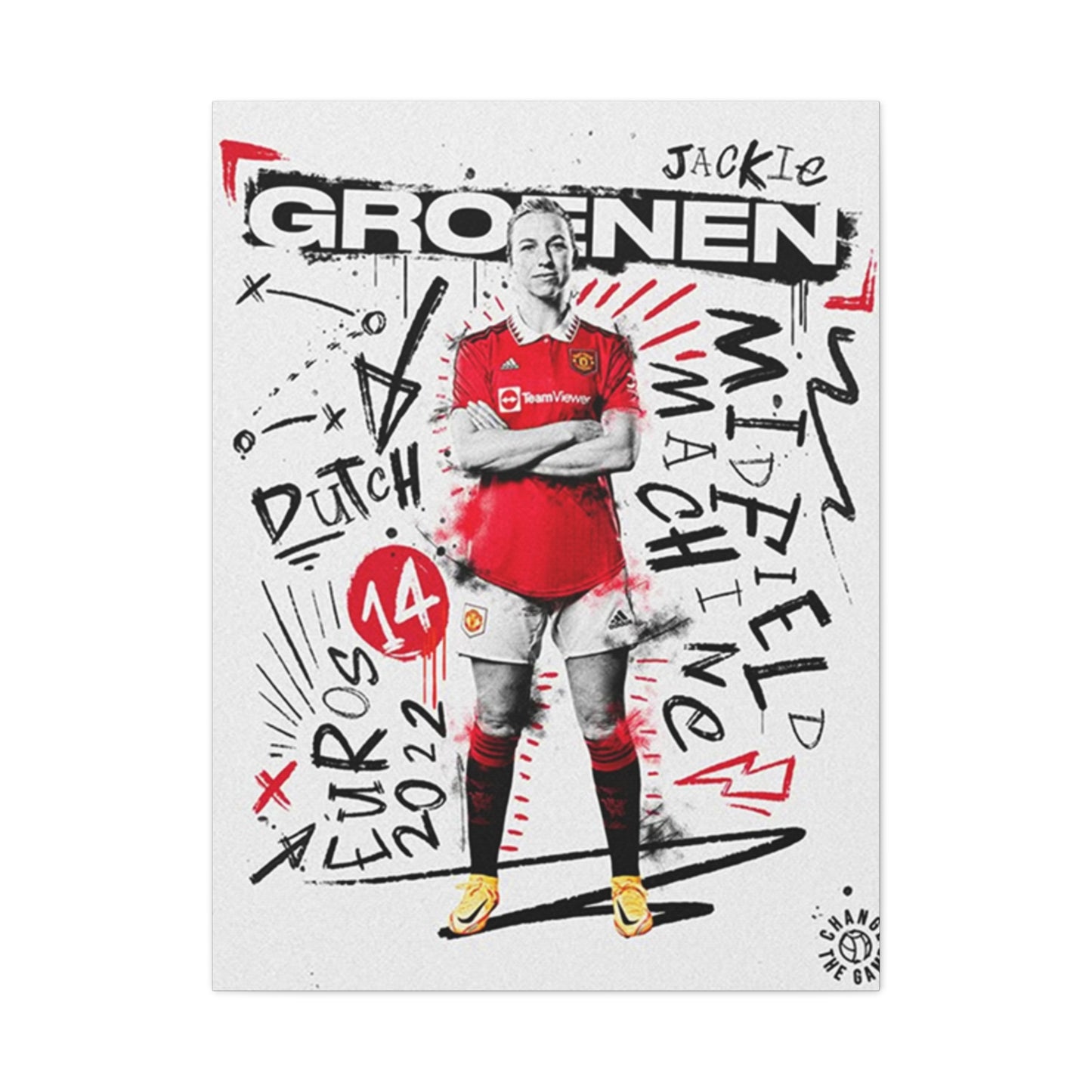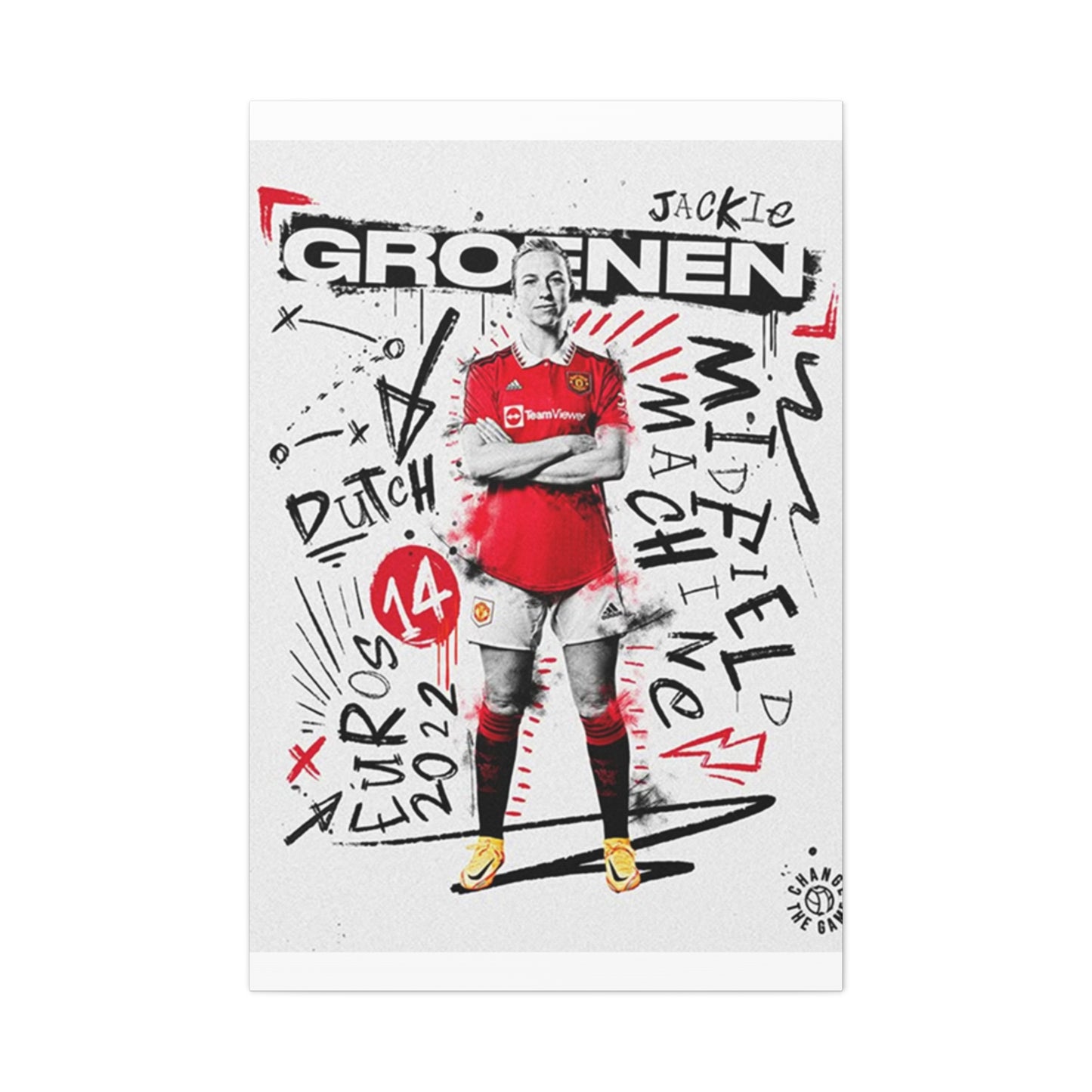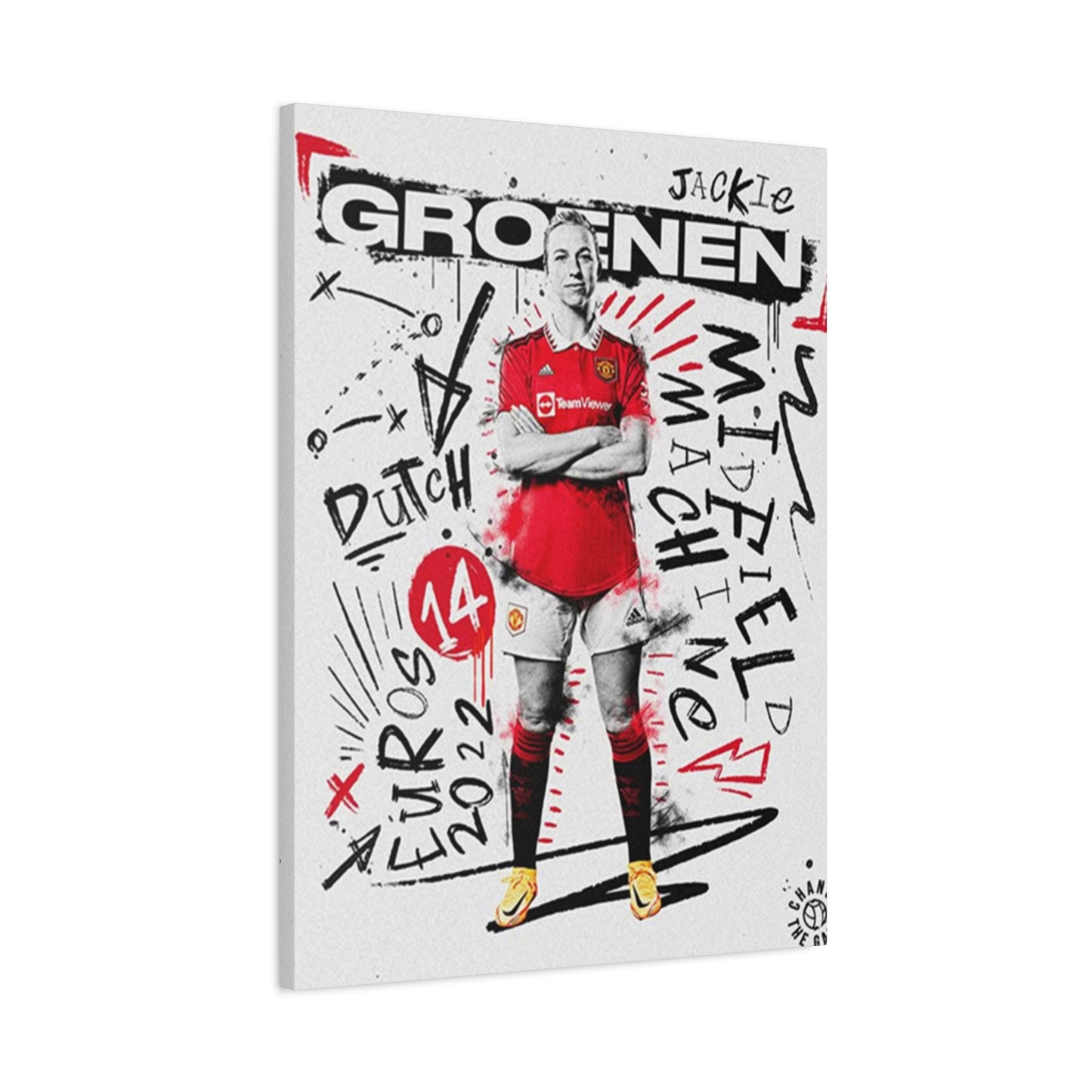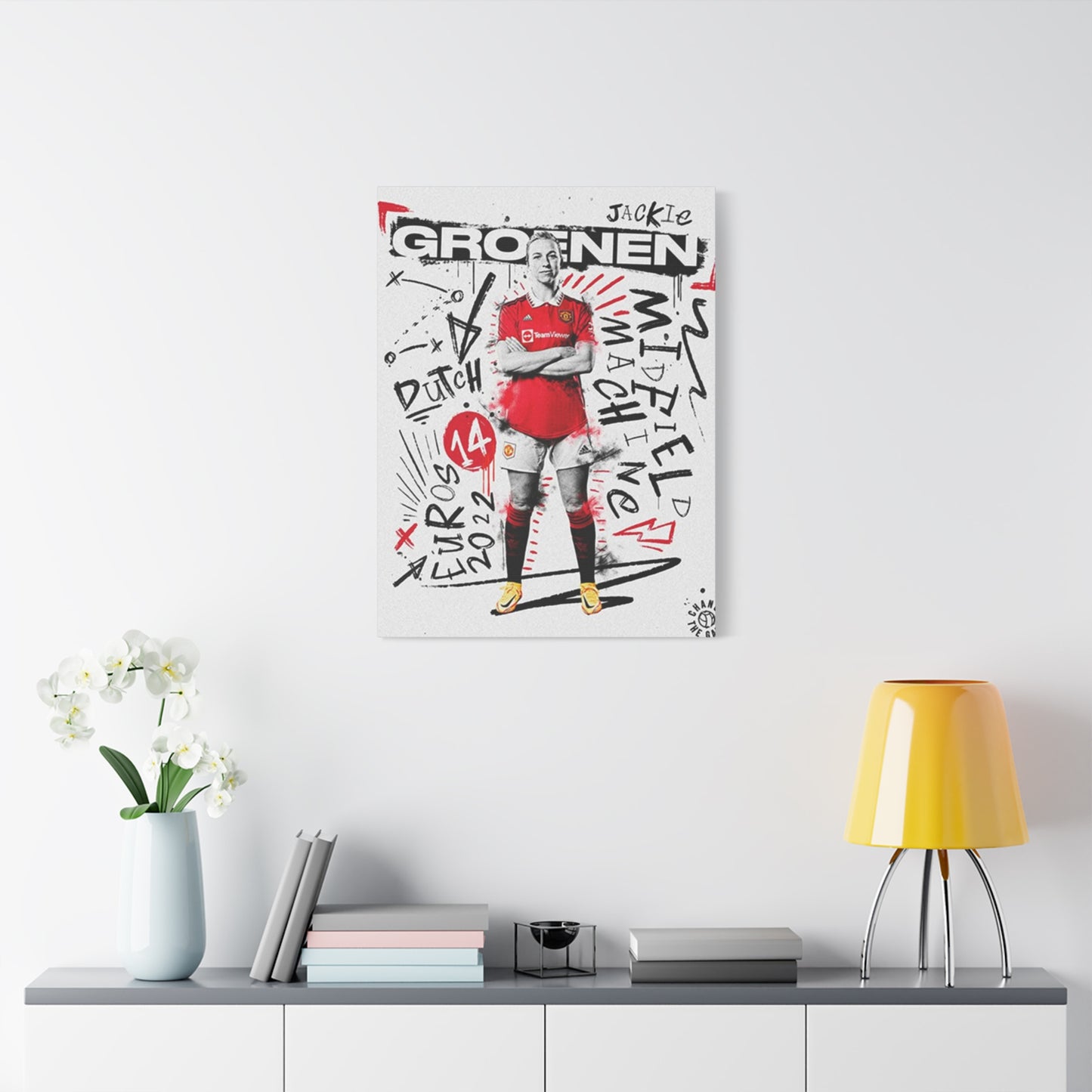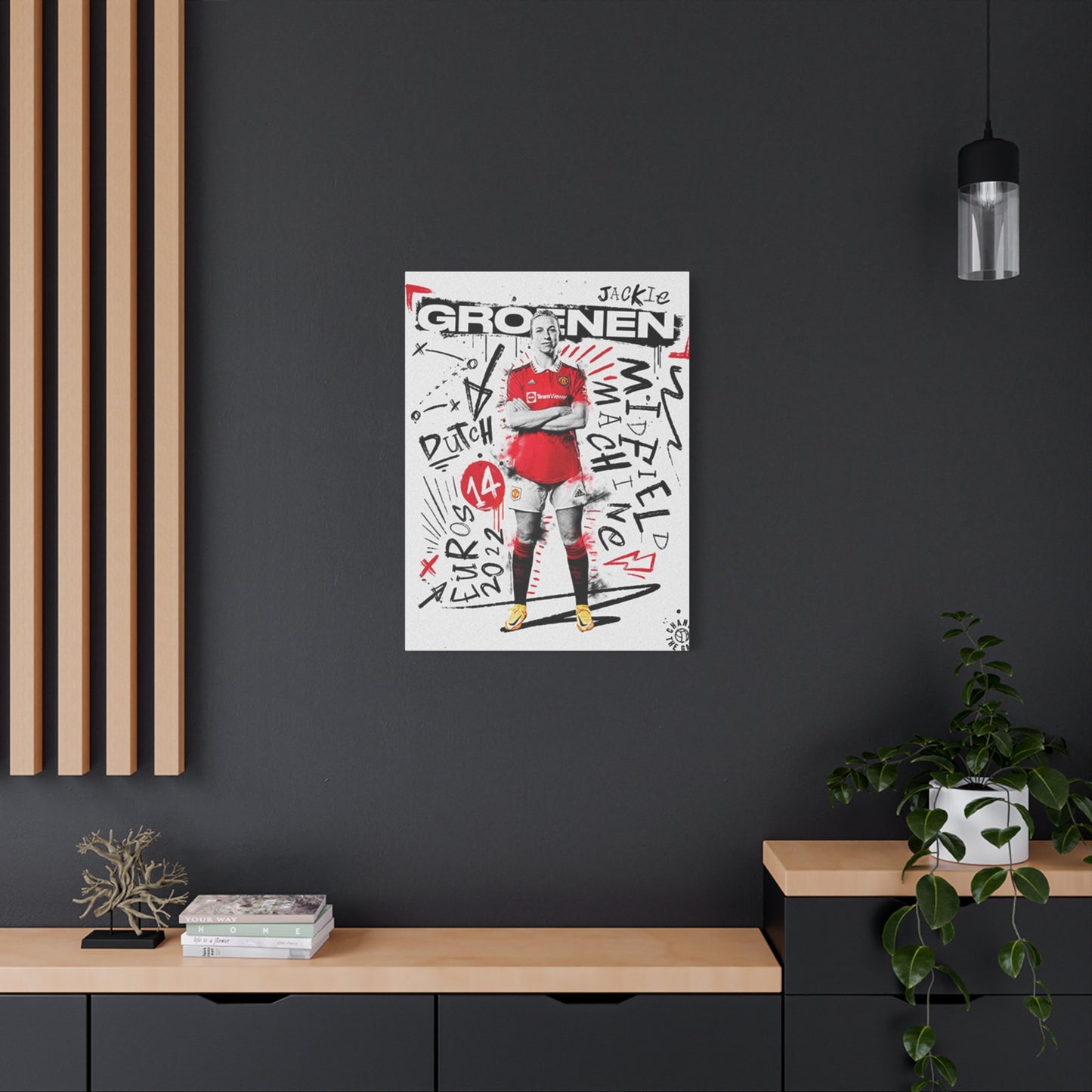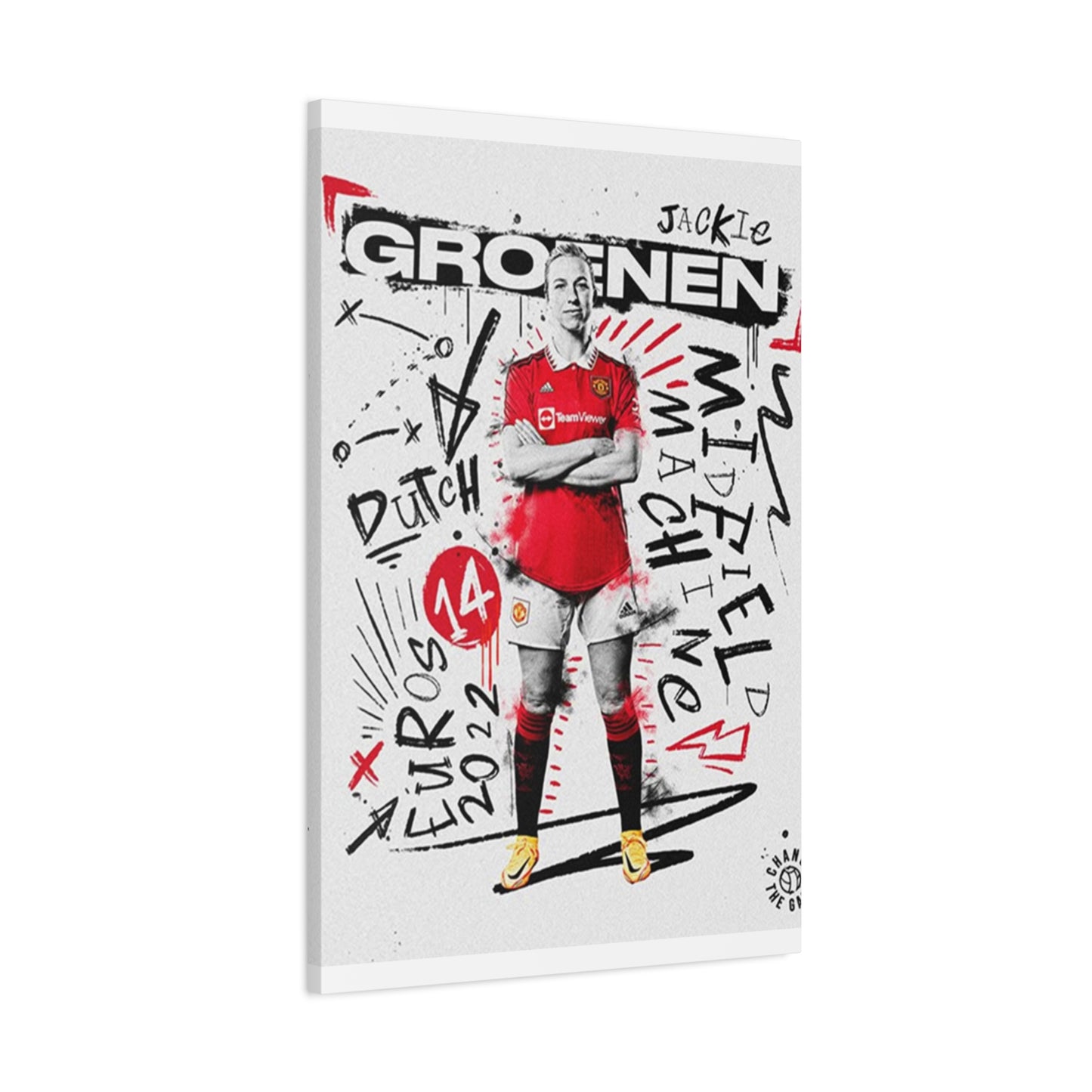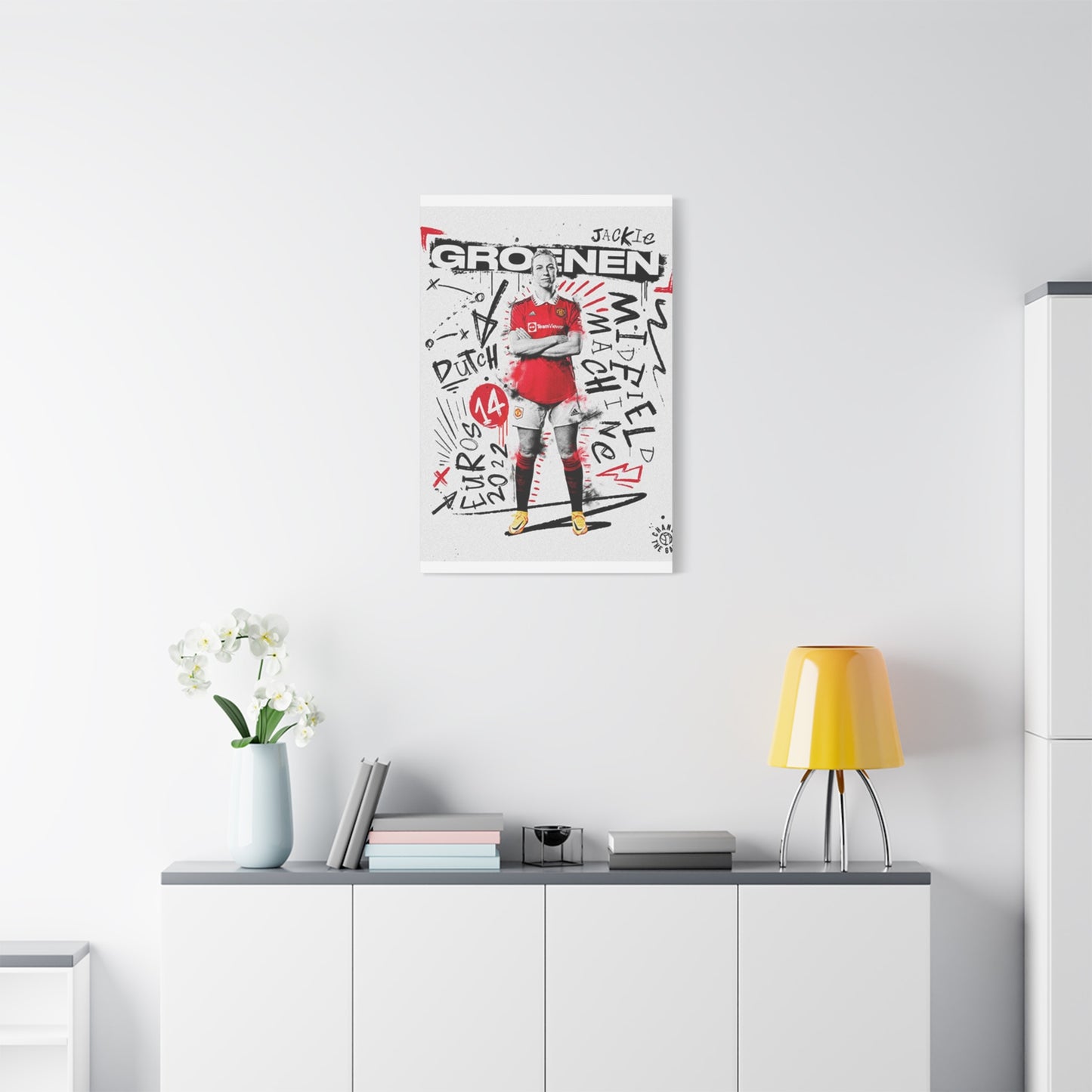The Beauty of Groenen Wall Art: A Green Touch for Every Room
Green wall art has emerged as one of the most powerful tools for creating harmonious and visually appealing environments. This comprehensive exploration delves into the multifaceted world of green-themed canvas prints, examining their psychological benefits, aesthetic applications, and practical implementation strategies. From the subtle influence of nature-inspired hues on our daily well-being to the sophisticated artistry of botanical compositions, green wall art represents far more than mere decoration—it embodies a connection to the natural world that our modern lifestyles often lack.
The growing popularity of green wall art reflects a deeper cultural shift toward biophilic design principles, where humans seek to integrate natural elements into their built environments. This movement recognizes the fundamental human need for nature connection, particularly in urban settings where access to green environments may be limited. Through carefully curated green-themed artwork, individuals can bring the restorative power of nature into their homes, offices, and personal sanctuaries.
Advantages of Incorporating Green Hues in Artistic Wall Displays
The incorporation of green elements in wall art extends far beyond aesthetic appeal, offering substantial psychological and physiological benefits that have been extensively documented in environmental psychology research. Green, universally associated with nature, growth, and renewal, creates an immediate sense of tranquility and balance within any environment. The human eye naturally processes green wavelengths with minimal strain, making green-toned artwork particularly suitable for environments where visual comfort is paramount.
Scientific studies have consistently demonstrated that exposure to green hues can significantly reduce stress hormones, lower blood pressure, and promote mental clarity. When implemented through wall art, these benefits become accessible throughout daily routines, creating micro-moments of restoration and calm. The presence of green artwork can transform sterile or overwhelming environments into more welcoming and psychologically supportive surroundings.
Beyond physiological benefits, green wall art serves as a powerful mood regulator. The color green occupies the center of the visible light spectrum, creating a natural balance that neither stimulates nor sedates. This balanced quality makes green artwork exceptionally versatile, suitable for environments requiring both focus and relaxation. Whether displayed in high-energy workplaces or peaceful bedroom retreats, green wall art maintains its beneficial properties while adapting to diverse functional requirements.
The psychological associations with green also contribute to enhanced creativity and problem-solving abilities. Research in environmental psychology suggests that exposure to green hues can improve cognitive flexibility and innovative thinking. This makes green wall art particularly valuable in creative workspaces, educational environments, and any setting where mental agility is desired. The subtle influence of green artwork can create an atmosphere conducive to both concentration and creative exploration.
Furthermore, green wall art can significantly improve perceived air quality and environmental comfort. While the artwork itself doesn't purify air, the psychological association with nature and freshness creates a subjective experience of cleaner, more invigorating surroundings. This perceptual benefit can enhance overall satisfaction with living and working environments, contributing to improved quality of life and productivity.
Nature-Themed Canvas Artwork Featuring Green Palettes
Nature-themed canvas prints utilizing green palettes offer an extensive range of artistic expressions, from photorealistic forest scenes to stylized botanical interpretations. These artworks capture the essence of natural environments while providing the practical benefits of indoor art displays. The versatility of nature-themed green art allows for seamless integration into diverse decorating schemes and architectural styles.
Forest landscapes represent one of the most popular categories of nature-themed green wall art. These pieces often feature layered compositions showcasing various shades of green, from the deep emerald of pine needles to the bright chartreuse of new spring growth. The depth and complexity of forest scenes create visual interest while maintaining the calming properties associated with natural environments. Advanced printing techniques can capture intricate details like dappled sunlight filtering through leaves, moss-covered tree bark, and the subtle gradations of forest undergrowth.
Tropical and jungle-themed artwork presents another compelling category within nature-inspired green art. These pieces typically feature bold, saturated greens alongside complementary tropical colors, creating vibrant yet harmonious compositions. Palm fronds, banana leaves, and exotic flowering plants provide rich textures and organic shapes that add visual dynamism to any environment. The exotic appeal of tropical themes can transform ordinary rooms into more adventurous and inspiring environments.
Botanical close-ups represent a more intimate approach to nature-themed green art. These pieces focus on specific plant elements—leaf structures, flower formations, or seed patterns—revealing the intricate beauty of natural design. Macro photography techniques can capture details invisible to casual observation, creating artwork that rewards close examination while maintaining broad visual appeal. The scientific precision of botanical art appeals to viewers who appreciate both aesthetic beauty and natural accuracy.
Meadow and grassland themes offer gentler interpretations of nature-themed green art. These compositions typically feature soft, flowing forms and subtle color variations that create peaceful, meditative atmospheres. The horizontal emphasis of grassland scenes can make rooms appear wider and more expansive, while the gentle movement suggested by wind-blown grasses adds subtle energy to static wall displays. These themes work particularly well in environments where maximum tranquility is desired.
Seasonal variations within nature-themed green art provide opportunities for dynamic decorating approaches. Spring-themed pieces emphasize fresh, bright greens associated with new growth, while summer themes might incorporate deeper, more mature green tones. This seasonal flexibility allows for rotating artwork displays that maintain visual interest throughout the year while preserving the beneficial properties of green color schemes.
Employing Green Tones for Environmental Tranquility
The strategic use of green tones in wall art can dramatically transform the emotional atmosphere of any environment, creating sanctuaries of calm within busy modern lifestyles. Understanding the nuanced effects of different green variations enables more intentional and effective decorating decisions that maximize psychological benefits while achieving desired aesthetic outcomes.
Sage green represents one of the most versatile and universally appealing tones for creating tranquil environments. This muted, grayish-green combines the calming properties of green with the sophistication of neutral tones. Sage green wall art works exceptionally well in bedrooms, meditation areas, and quiet reading nooks where peaceful ambiance is prioritized. The understated elegance of sage tones complements both traditional and contemporary decorating approaches without overwhelming existing color schemes.
Forest green offers deeper, more grounding qualities that can anchor environments and create feelings of stability and security. This rich, saturated tone evokes the depths of mature forests, bringing associations of permanence and natural wisdom into indoor environments. Forest green wall art works particularly well in studies, libraries, and professional settings where gravitas and focus are desired. The sophisticated depth of forest green creates visual weight that can balance lighter elements within room compositions.
Mint and seafoam greens provide lighter, more refreshing approaches to tranquil green wall art. These pale, cool-toned greens evoke associations with fresh air, clean water, and new beginnings. They work exceptionally well in bathrooms, kitchens, and other areas where cleanliness and freshness are emphasized. The gentle, soothing quality of pale greens makes them suitable for children's rooms and healthcare environments where stress reduction is particularly important.
Olive green introduces earthy, sophisticated notes that bridge the gap between green and brown color families. This complex tone works well in environments that blend natural and refined elements, such as wine cellars, upscale restaurants, and elegant living areas. Olive green wall art can create sophisticated atmospheres that feel both grounded and elevated, appealing to viewers who appreciate subtle complexity in their decorating choices.
Emerald and jewel-toned greens provide more dramatic approaches to tranquil green wall art. While these saturated tones might seem contrary to tranquility goals, when used thoughtfully, they can create deeply satisfying visual experiences. The key lies in balancing jewel-toned green artwork with plenty of neutral surrounding elements and ensuring adequate lighting to prevent overwhelming effects. These rich greens work particularly well as accent pieces in larger rooms where their intensity can be properly appreciated.
The layering of multiple green tones within single artworks or coordinated collections can create sophisticated visual narratives that enhance tranquil atmospheres. Gradual transitions between light and dark greens mimic natural lighting effects, creating dynamic yet peaceful compositions that maintain visual interest without disrupting calm ambiances. This layered approach allows for more complex emotional responses while preserving the fundamental tranquility associated with green color schemes.
Comparing Abstract and Representational Green Artwork
The choice between abstract and realistic green artwork significantly impacts the overall aesthetic and psychological effect of wall art installations. Both approaches offer distinct advantages and can serve different functional and emotional purposes within decorated environments. Understanding these differences enables more informed selection processes that align artwork choices with specific goals and preferences.
Abstract green artwork emphasizes color, form, and emotional expression over literal representation of natural elements. These pieces often feature bold color interactions, geometric compositions, or fluid organic shapes that suggest rather than depict natural forms. The non-representational nature of abstract green art allows viewers to project their own interpretations and emotional responses, creating more personalized connections with the artwork. This interpretive flexibility makes abstract pieces suitable for environments where individual expression and creativity are valued.
The advantages of abstract green artwork include greater versatility in decorating applications and reduced visual constraints. Without the need to represent specific natural elements, abstract pieces can complement a wider range of existing decor and architectural features. The emphasis on pure color and form allows abstract green art to function more as environmental enhancement rather than focal decoration, seamlessly integrating into existing design schemes without competing for attention.
Abstract green compositions often explore sophisticated color relationships and visual dynamics that might be impossible in representational artwork. Artists can manipulate green tones for maximum psychological impact, creating pieces specifically designed to promote relaxation, energy, or contemplation. The freedom from realistic constraints allows for more experimental approaches to color temperature, saturation, and contrast, potentially achieving stronger emotional effects than literal representations.
Realistic green artwork, conversely, provides immediate recognition and connection through familiar natural imagery. Photographic or highly detailed painted representations of forests, plants, and landscapes offer viewers clear reference points and established emotional associations. This directness can be particularly valuable in environments where clear communication of natural themes is desired, such as healthcare facilities, educational settings, or businesses emphasizing environmental consciousness.
The psychological impact of realistic green artwork often feels more immediate and accessible than abstract alternatives. Viewers can quickly identify and connect with familiar natural elements, triggering established positive associations with outdoor experiences and natural beauty. This accessibility makes realistic green artwork particularly suitable for public environments where broad appeal and universal recognition are important considerations.
Hybrid approaches combining abstract and realistic elements offer compelling alternatives that capture benefits from both styles. Semi-abstract botanical forms, stylized landscape elements, or photographically-based artwork with artistic manipulation can provide recognition and accessibility while maintaining creative flexibility. These hybrid pieces often appeal to viewers who appreciate both artistic innovation and natural beauty, creating sophisticated decorating solutions that satisfy multiple aesthetic preferences.
The scale and complexity of abstract versus realistic green artwork also influence their environmental impact. Large-scale abstract pieces can create dramatic focal points and significantly alter room atmospheres, while realistic artwork might work more effectively in smaller formats where detail appreciation is possible. Conversely, sweeping landscape photography might require large formats to achieve maximum impact, while abstract compositions can maintain their power across various sizes.
Creating Botanical Displays with Green Print Collections
Botanical print collections offer sophisticated approaches to green wall art that combine scientific accuracy with artistic beauty. These curated displays can transform any environment into a gallery-like presentation that celebrates the diversity and intricacy of plant life while maintaining cohesive visual themes. The educational and aesthetic value of botanical collections makes them particularly appealing for environments where both beauty and intellectual engagement are desired.
Historical botanical illustrations provide rich sources for green print collections, offering artwork that combines scientific precision with artistic elegance. These vintage-inspired pieces often feature detailed plant anatomies, growth patterns, and seasonal variations rendered in sophisticated color palettes dominated by various green tones. The scholarly appearance of botanical illustrations appeals to viewers who appreciate both natural beauty and intellectual rigor, making these collections suitable for studies, libraries, and educational environments.
Contemporary botanical photography offers modern approaches to green print collections that capture plant life with unprecedented detail and artistic vision. High-resolution macro photography can reveal intricate leaf structures, flower formations, and growth patterns that showcase the remarkable complexity of plant design. These modern botanical collections often emphasize dramatic lighting, unusual perspectives, and artistic composition while maintaining scientific accuracy and educational value.
Herbarium-style collections present another compelling approach to botanical green wall art. These displays mimic traditional plant specimen collections, featuring pressed or photographed plant samples arranged in systematic presentations. The organized, scientific appearance of herbarium collections creates sophisticated wall displays that function as both art and educational resources. The systematic arrangement of specimens can create visually striking patterns while celebrating botanical diversity.
Seasonal botanical collections allow for dynamic wall art displays that reflect natural cycles and environmental changes. Spring collections might emphasize fresh growth and new leaves, summer displays could feature full foliage and flowering plants, autumn arrangements might showcase changing leaf colors including various green tones, and winter collections could highlight evergreen species and dormant plant forms. This seasonal approach maintains year-round interest while preserving consistent green color themes.
The arrangement and presentation of botanical print collections significantly impact their overall effectiveness as decorating elements. Grid arrangements create formal, gallery-like presentations that emphasize the systematic nature of botanical study. Organic arrangements following natural growth patterns might reflect the way plants actually grow and interact in natural environments. The choice between symmetrical and asymmetrical arrangements depends on the desired level of formality and the architectural characteristics of the display environment.
Mixing different botanical illustration styles within single collections can create sophisticated visual narratives that trace the evolution of botanical art and scientific understanding. Combining historical engravings with contemporary photography, watercolor illustrations with digital renderings, or detailed anatomical studies with artistic interpretations creates layered presentations that reward careful examination while maintaining broad visual appeal.
The framing and presentation materials for botanical print collections should complement both the artwork and the environment where they will be displayed. Traditional wood frames might suit historical botanical illustrations, while contemporary metal frames could better complement modern photographic collections. Matting choices should enhance the scientific appearance of botanical displays while ensuring that green tones remain vibrant and true to the original specimens.
Green Artwork Applications in Contemporary Home Environments
Contemporary home environments present unique opportunities and challenges for incorporating green wall art effectively. Modern architectural features, open floor plans, and minimalist design philosophies require thoughtful approaches to artwork integration that enhance rather than compete with existing design elements. Understanding how green artwork functions within contemporary contexts enables more successful decorating outcomes that reflect current aesthetic trends while maintaining timeless appeal.
Open-concept living areas characteristic of contemporary homes benefit significantly from strategic green artwork placement. Large-scale green compositions can help define different functional zones within open floor plans without requiring physical barriers. A substantial forest landscape or abstract green composition positioned behind a seating area can create visual boundaries that separate living functions from dining or kitchen activities. The calming influence of green artwork also helps counterbalance the potential overwhelming nature of large, open environments.
Contemporary kitchens, with their emphasis on clean lines and functional efficiency, can be enhanced through carefully selected green wall art that introduces natural elements without disrupting the streamlined aesthetic. Minimalist botanical prints, abstract green compositions, or photography featuring fresh produce can complement contemporary kitchen design while adding visual warmth and natural connection. The placement of green artwork in kitchen environments should consider practical factors such as moisture, heat, and cleaning requirements.
Modern bedroom environments prioritize simplicity and tranquility, making them ideal settings for green wall art applications. Large-scale nature photography positioned above platform beds can create striking focal points while promoting restful atmospheres. Abstract green compositions might work well in contemporary bedrooms where artistic expression is valued alongside relaxation benefits. The scale and intensity of green artwork in bedrooms should be carefully calibrated to promote rest rather than stimulation.
Contemporary bathroom design often emphasizes spa-like qualities and natural materials, creating perfect contexts for green wall art integration. Moisture-resistant canvas prints featuring tropical foliage, abstract water-inspired compositions, or minimalist plant photography can enhance the serene, natural atmosphere characteristic of modern bathroom design. The artwork selection should consider the practical constraints of bathroom environments while maximizing the psychological benefits of green color schemes.
Home office environments within contemporary homes require green artwork that supports both productivity and well-being. Studies have shown that green hues can enhance focus and creativity, making nature-inspired artwork particularly valuable in work environments. Large botanical prints, forest landscapes, or abstract green compositions can create visually interesting backgrounds for video calls while providing psychological benefits during work hours. The positioning of artwork relative to computer screens and lighting sources requires careful consideration to avoid glare or distraction.
Contemporary dining areas benefit from green artwork that creates sophisticated atmospheres conducive to social interaction and relaxation. The restaurant industry has long recognized the appetite-enhancing properties of green color schemes, making nature-inspired artwork particularly suitable for dining environments. Large-scale compositions featuring fresh produce, garden scenes, or abstract green forms can create engaging conversational backdrops while promoting comfortable dining experiences.
The integration of green artwork with contemporary technology and smart home systems presents emerging opportunities for dynamic wall art displays. Digital frames capable of rotating through collections of green-themed artwork allow for seasonal variations and mood-based selections. Smart lighting systems can be programmed to enhance green artwork displays, adjusting color temperature and intensity to maximize the psychological benefits of green color schemes throughout different times of day.
Sourcing Quality Green Canvas Print Collections
The acquisition of high-quality green canvas prints requires careful consideration of artistic sources, printing technologies, and long-term durability factors. Understanding the various channels for obtaining green-themed artwork enables more informed purchasing decisions that balance aesthetic preferences, quality requirements, and budget constraints. The rapidly expanding market for canvas prints offers both opportunities and challenges for consumers seeking exceptional green wall art collections.
Online art marketplaces have revolutionized access to green canvas prints, offering vast selections from artists worldwide. These platforms often feature search capabilities that allow filtering by color, theme, size, and price, making it easier to locate specific types of green artwork. However, the quality of prints from online sources can vary significantly, requiring careful evaluation of printing specifications, canvas materials, and frame construction. Reading customer reviews and examining seller ratings provides valuable insights into quality and service reliability.
Local art galleries and print shops offer advantages in terms of quality assessment and customer service. The ability to physically examine canvas prints before purchase allows for evaluation of color accuracy, print resolution, and construction quality. Local sources also typically provide better customer service for issues like custom sizing, framing options, and return policies. Building relationships with local art providers can lead to access to exclusive collections and personalized service that enhances the artwork acquisition experience.
Artist studios and individual artists represent premium sources for unique green canvas prints that offer exclusivity and artistic authenticity. Commission work allows for completely customized green artwork that perfectly matches specific requirements for color, size, and subject matter. Working directly with artists also provides opportunities to understand the creative process and acquire pieces with documented provenance. However, artist-direct purchases typically involve higher costs and longer lead times than mass-market alternatives.
Art fairs and exhibitions provide opportunities to discover emerging artists and unique green artwork collections that might not be available through other channels. These venues allow for direct interaction with artists and immediate evaluation of artwork quality. The social atmosphere of art events can also provide educational opportunities about different artistic techniques, green color applications, and current trends in nature-inspired artwork.
Print-on-demand services offer cost-effective solutions for accessing vast libraries of green-themed artwork from multiple artists and photographers. These services typically provide consistent quality standards, standardized sizing options, and reliable shipping processes. However, the mass-production nature of print-on-demand services means less exclusivity and potentially lower artistic value compared to limited edition or original works.
Professional photography licensing platforms provide access to high-quality nature photography suitable for green canvas print applications. These sources often offer exceptional image resolution and professional color management, ensuring accurate reproduction of natural green tones. The licensing approach allows for legal use of professional imagery while often being more cost-effective than commissioning original photography.
When evaluating potential sources for green canvas prints, several quality indicators should be considered. Color accuracy is paramount for green artwork, as subtle variations in hue and saturation can significantly impact the psychological and aesthetic effects. Print resolution should be sufficient for the intended display size, typically requiring 300 DPI or higher for optimal results. Canvas material quality affects both appearance and longevity, with cotton and linen canvases generally superior to synthetic alternatives.
Professional Framing Techniques for Green-Themed Artwork
Proper framing significantly enhances the presentation and longevity of green-themed wall art while protecting investment value and ensuring optimal visual impact. Understanding professional framing techniques enables more informed decisions about presentation options that complement artwork while providing appropriate protection. The relationship between frame selection, matting choices, and green artwork requires careful consideration to achieve harmonious results that enhance rather than compete with the artistic content.
Frame material selection for green artwork should consider both aesthetic compatibility and protective function. Wood frames offer natural warmth that often complements green themes, with species like oak, maple, or bamboo providing subtle earth tones that enhance botanical and nature-themed artwork. The grain patterns and natural variations in wood can create interesting visual relationships with organic green compositions while maintaining sophisticated appearances suitable for various decorating contexts.
Metal frames provide contemporary alternatives that work particularly well with modern or abstract green artwork. Aluminum frames offer clean lines and neutral appearances that allow artwork to dominate visual attention. The variety of metal finishes available—including brushed steel, matte black, or copper tones—enables customization that can either complement or contrast with green color schemes. The durability and precision of metal framing make it suitable for high-traffic environments or valuable artwork requiring maximum protection.
Composite and synthetic frame materials provide cost-effective alternatives that can mimic the appearance of natural materials while offering enhanced durability and consistency. High-quality composite frames can simulate wood grain or metal finishes while providing better resistance to moisture, temperature fluctuations, and handling damage. These materials work well for casual or temporary displays where maximum investment protection is not required.
Matting plays crucial roles in enhancing green artwork presentation while providing physical protection from frame contact. Neutral matting colors typically work best with green artwork, as they avoid color competition while providing visual breathing room around the composition. Cream, off-white, or pale gray mats create sophisticated presentations that allow green tones to appear more vibrant through contrast. The width of matting borders should be proportional to artwork size, with larger pieces typically requiring wider mats for balanced presentations.
Multiple matting techniques can create more sophisticated presentations for valuable or particularly significant green artwork. Double or triple matting using different colored or textured materials can create layered visual effects that add depth and richness to the presentation. However, complex matting approaches should be used judiciously, as they can overwhelm subtle or minimalist green artwork that benefits from simple, clean presentations.
Conservation framing techniques provide maximum protection for valuable green artwork while ensuring long-term color preservation. Acid-free matting materials prevent chemical interactions that can cause discoloration over time. UV-filtering glazing protects green pigments from light-induced fading, which is particularly important for artwork displayed in bright environments. Proper backing materials and sealing techniques prevent moisture infiltration and environmental contaminants from damaging artwork over time.
The relationship between frame size and artwork dimensions requires careful consideration to achieve proper visual proportions. Green artwork with delicate details might benefit from wider frame borders that provide visual rest areas and prevent overwhelming effects. Bold, large-scale green compositions might work better with minimal framing that allows the artwork to dominate the presentation. The architectural context where the framed artwork will be displayed should also influence frame size decisions.
Professional mounting techniques ensure that artwork remains properly positioned within frames while allowing for natural expansion and contraction due to environmental changes. Proper mounting prevents wrinkling, sagging, or other distortions that can develop over time in incorrectly installed artwork. For canvas prints, stretching techniques and corner treatments significantly impact both appearance and longevity of the final presentation.
Enhancing Creative Productivity Through Green Artwork
The strategic placement of green artwork in creative environments can significantly enhance productivity, innovation, and artistic output through both psychological and physiological mechanisms. Research in environmental psychology consistently demonstrates that exposure to natural colors, particularly green, can improve cognitive function, reduce mental fatigue, and stimulate creative thinking processes. Understanding these effects enables more intentional use of green wall art to optimize creative work environments.
The cognitive benefits of green artwork exposure stem from its position in the middle of the visible light spectrum, which allows the human eye to process green wavelengths with minimal strain. This visual efficiency reduces eye fatigue during extended creative sessions while maintaining optimal visual acuity for detailed work. Creative professionals who work with computers, detailed drawings, or precision instruments particularly benefit from green artwork that provides restful visual breaks without requiring attention shifts away from work areas.
Green artwork can also serve as powerful inspiration sources for creative projects. Nature-themed green compositions provide rich visual references for color palettes, organic forms, and compositional ideas that can inform various creative disciplines. Abstract green artwork might suggest emotional themes, movement patterns, or conceptual frameworks that spark innovative approaches to creative challenges. The presence of inspiring artwork within creative workplaces creates an environment that continuously feeds imagination and artistic development.
The stress-reduction properties of green artwork contribute significantly to creative productivity by maintaining optimal psychological states for innovative thinking. High-stress environments often inhibit creative risk-taking and experimental approaches that are essential for breakthrough achievements. Green artwork helps maintain calm, focused mental states that support both analytical problem-solving and intuitive creative leaps. This psychological support becomes particularly valuable during challenging creative projects or tight deadlines.
Creative collaboration environments benefit from green artwork that promotes positive social interactions while reducing competitive tensions. The universally calming effect of green helps create comfortable atmospheres where team members feel safe to share experimental ideas and constructive criticism. Large-scale green compositions can also serve as neutral focal points that bring teams together without favoring particular viewpoints or creative approaches.
The placement of green artwork relative to work areas requires strategic consideration to maximize productivity benefits. Artwork positioned at eye level during brief breaks provides optimal restoration effects, while larger compositions visible in peripheral vision can provide continuous subtle benefits without causing distraction. The intensity and complexity of green artwork should be calibrated to creative work requirements—complex, stimulating artwork might inspire innovation but could prove distracting during detailed technical work.
Different creative disciplines may benefit from specific types of green artwork applications. Visual artists might prefer realistic nature photography that provides accurate color references and composition inspiration. Writers could benefit from abstract green compositions that suggest emotional themes without providing specific visual distractions. Musicians might respond well to flowing, rhythmic green artwork that suggests movement and temporal progression. Understanding these discipline-specific preferences enables more targeted artwork selection for creative environments.
The seasonal variation of green artwork can provide dynamic inspiration sources that prevent visual habituation and maintain ongoing creative stimulation. Rotating between different green themes—spring growth, summer abundance, autumn transitions, winter evergreens—provides fresh inspiration while maintaining consistent color psychology benefits. This approach also reflects natural creative cycles and can help synchronize creative work with seasonal energy patterns.
Lighting considerations become particularly important when using green artwork to enhance creative productivity. Natural lighting that accurately renders green tones provides the most beneficial effects, but artificial lighting can be optimized to preserve color accuracy and psychological benefits. Full-spectrum lighting or lighting systems with adjustable color temperature can ensure that green artwork maintains its beneficial properties throughout different times of day and seasonal conditions.
Integrating Green Artwork with Natural Decorating Elements
The combination of green wall art with other natural decorating elements creates synergistic effects that enhance the biophilic benefits of both components while developing more comprehensive nature-inspired environments. Understanding how green artwork interacts with live plants, natural materials, and organic textures enables more sophisticated decorating approaches that maximize psychological and aesthetic benefits while creating cohesive design narratives.
Live plants represent the most obvious companions for green wall art, but their integration requires thoughtful consideration to avoid redundancy while maximizing complementary effects. The key lies in using artwork and plants to serve different functional and aesthetic roles within the same environment. Green artwork can provide consistent natural color presence in areas where live plants might not thrive, while plants contribute authentic natural textures, air purification benefits, and seasonal changes that artwork cannot replicate.
The scale relationship between green artwork and live plants significantly impacts overall visual harmony. Large-scale green compositions can serve as backdrops for smaller plant collections, creating layered natural environments with varied visual depths. Conversely, substantial plant installations might be balanced by smaller, more subtle green artwork that provides color echoes without competing for visual attention. The goal is creating collaborative rather than competitive relationships between different natural elements.
Natural material furniture and accessories create foundation contexts that enhance green artwork presentation while contributing to overall biophilic design goals. Wood furnishings provide warm, organic textures that complement both the natural themes of green artwork and the color relationships inherent in forest and botanical compositions. Stone elements, whether in countertops, accent walls, or decorative objects, contribute earth-based grounding that enhances the stability and permanence suggested by many green art themes.
Textile selections play important supporting roles in environments combining green artwork with natural elements. Natural fiber fabrics—cotton, linen, wool, silk—provide authentic textures that reinforce natural themes while offering opportunities to introduce complementary colors that enhance green artwork presentation. Earth-toned textiles in browns, tans, and cream create neutral backgrounds that allow green artwork to maintain visual prominence while feeling naturally integrated rather than imposed.
Water features, whether substantial installations or small tabletop fountains, create dynamic natural elements that complement static green artwork through movement and sound. The psychological associations between water and plant life create natural partnerships that enhance the overall biophilic impact of decorated environments. The reflective properties of water can also create interesting lighting effects that enhance green artwork presentation throughout different times of day.
Natural lighting optimization becomes even more critical in environments combining green artwork with other natural elements. The goal is creating lighting conditions that enhance both artwork color accuracy and the health of live plants while supporting human visual comfort and circadian rhythm maintenance. Large windows, skylights, and glass doors provide ideal natural lighting, but artificial supplementation should maintain full-spectrum characteristics that benefit all natural elements within the environment.
The arrangement of natural elements should create visual flow patterns that guide attention through different components while maintaining overall harmony. Green artwork can serve as visual anchor points that organize other natural elements within coherent compositions. The principles of traditional landscape design—including concepts like focal points, visual balance, and seasonal interest—can be adapted for interior environments combining artwork with natural decorating elements.
Seasonal coordination between green artwork and natural elements provides opportunities for dynamic environmental evolution that maintains year-round interest while celebrating natural cycles. Rotating green artwork to reflect seasonal plant conditions creates continuity between indoor and outdoor natural experiences. This approach also allows for highlighting different aspects of natural beauty throughout the year while maintaining consistent green color psychology benefits.
Botanical and Natural Patterns in Canvas Print Design
The translation of botanical patterns and natural forms into canvas print designs represents a sophisticated art form that captures the mathematical precision and organic beauty inherent in plant structures. Understanding how these patterns function within artistic compositions enables more informed appreciation and selection of botanical canvas prints while recognizing the deep connections between natural design principles and artistic expression.
Fractal patterns appear throughout botanical structures, from the branching of tree limbs to the spiral arrangements of flower petals and leaf positioning. These self-similar patterns create visual rhythms that feel naturally harmonious to human perception, having evolved alongside our visual processing systems over millennia. Canvas prints that capture or interpret fractal botanical patterns often create particularly satisfying visual experiences that reward both casual viewing and detailed examination.
The golden ratio and Fibonacci sequences govern many botanical growth patterns, creating proportional relationships that have informed artistic composition principles throughout history. Canvas prints that consciously incorporate these mathematical relationships—whether through direct botanical subject matter or abstract interpretations—often achieve exceptional visual balance and aesthetic appeal. Understanding these underlying structural principles enables more sophisticated evaluation of botanical canvas print quality and artistic merit.
Symmetrical and asymmetrical patterns in botanical forms provide different aesthetic and psychological effects that can be strategically employed in canvas print selections. Perfect radial symmetry, as seen in many flowers, creates formally satisfying compositions that promote feelings of stability and order. Asymmetrical growth patterns, common in tree forms and vine structures, introduce dynamic tension and natural movement that can energize environments and promote creative thinking.
Seasonal pattern variations in botanical subjects provide opportunities for dynamic canvas print collections that reflect natural cycles while maintaining consistent artistic themes. Spring patterns emphasize emergence and growth, with designs featuring unfurling leaves, budding flowers, and fresh green tones. Summer patterns might focus on full development and abundance, while autumn designs could explore transformation and preparation themes. Winter patterns often highlight structural elements and endurance themes through evergreen subjects and dormant plant forms.
Scale variations in botanical pattern presentation significantly impact the psychological and aesthetic effects of canvas prints. Macro-scale presentations that reveal intricate leaf structures, flower details, or seed arrangements create intimate viewing experiences that reward close examination. Medium-scale compositions that show whole plants or plant communities provide more comprehensive natural contexts while maintaining pattern visibility. Large-scale presentations that abstract botanical patterns into environmental compositions create immersive experiences that can transform entire room atmospheres.
Color pattern variations within botanical subjects offer extensive opportunities for green-themed canvas print selections. Monochromatic green presentations emphasize form, texture, and structural relationships while maximizing color psychology benefits. Complementary color patterns that include reds, oranges, or purples alongside greens create more dynamic compositions that might suit environments where visual stimulation is desired alongside natural calming effects.
The artistic interpretation of botanical patterns ranges from scientifically accurate photographic documentation to highly stylized artistic abstractions. Realistic presentations preserve the educational value and natural recognition that connects viewers with authentic botanical knowledge. Stylized interpretations allow artists to emphasize particular pattern elements or emotional qualities while maintaining botanical inspiration. Abstract derivations from botanical patterns can create unique decorative solutions that provide natural association benefits without literal representation requirements.
Texture patterns in botanical canvas prints contribute significantly to visual interest and tactile associations even in two-dimensional presentations. The smooth surfaces of succulent leaves, the rough bark of mature trees, the delicate veining of deciduous leaves, and the fluffy textures of seed heads all translate into visual textures that can enhance environmental tactile richness. Advanced printing techniques can emphasize these textural qualities, creating canvas prints that engage multiple senses even through purely visual presentation.
Cultural and historical interpretations of botanical patterns provide rich sources for canvas print designs that combine natural beauty with human cultural expression. Traditional botanical illustration styles from different cultures emphasize different pattern elements and aesthetic approaches, creating opportunities for canvas print collections that reflect both natural beauty and cultural appreciation. Understanding these historical approaches enables more informed selection of botanical canvas prints that align with personal cultural interests and decorating goals.
Green Artwork for Professional and Office Environments
The integration of green artwork into professional and office environments offers significant benefits for employee well-being, productivity, and overall workplace satisfaction while contributing to positive corporate image and client impressions. Research in organizational psychology consistently demonstrates that biophilic design elements, particularly green color schemes and nature-inspired artwork, can reduce workplace stress, improve focus, and enhance creative problem-solving abilities. Understanding how to effectively implement green artwork in professional settings enables organizations to create more supportive and productive work environments.
The psychological benefits of green artwork in office environments are particularly pronounced due to the high-stress nature of many professional activities. The calming influence of green hues can help counterbalance the stimulating effects of bright artificial lighting, electronic device screens, and deadline pressures that characterize modern office environments. Strategic placement of green artwork in common areas, meeting rooms, and individual workstations can create micro-environments of restoration that support employee well-being throughout busy workdays.
Reception and client-facing areas benefit significantly from sophisticated green artwork installations that create welcoming first impressions while communicating organizational values related to growth, stability, and environmental consciousness. Large-scale nature photography, elegant botanical prints, or professionally commissioned abstract green compositions can establish appropriate tone and sophistication levels for different types of businesses. The selection of green artwork for client areas should consider the organization's industry, target clientele, and desired brand associations.
Conference and meeting rooms present ideal opportunities for green artwork applications that can enhance collaborative effectiveness and reduce meeting-related stress. Research suggests that exposure to natural elements can improve group decision-making processes and reduce interpersonal tensions during challenging discussions. Green artwork in meeting environments should be sophisticated enough to maintain professional credibility while providing subtle psychological benefits that support productive collaboration.
Individual workstation environments can be enhanced through smaller-scale green artwork that provides personal restoration opportunities without creating distraction or unprofessional appearances. Desktop-sized prints featuring botanical subjects or abstract green compositions can provide brief visual escapes during intensive work periods. The selection of personal green artwork should consider both individual preferences and corporate policy regarding workspace personalization.
Final Thoughts
Groenen wall art brings a refreshing and vibrant green touch to any room, making it a perfect addition for those who want to infuse their space with natural beauty and tranquility. This style of artwork, often inspired by lush greenery and botanical elements, creates an inviting atmosphere that promotes relaxation and rejuvenation. Whether your home décor leans toward modern minimalism, rustic charm, or eclectic vibrancy, Groenen art adapts effortlessly, adding life and energy wherever it’s displayed.
One of the standout qualities of Groenen wall art is its versatility. The rich green hues evoke the calming presence of nature, grounding the space and fostering a sense of balance and harmony. These tones pair beautifully with neutral palettes, warm woods, and natural textures, making it easy to incorporate into living rooms, bedrooms, kitchens, or even office spaces. By bringing in the essence of the outdoors, Groenen art helps create an environment that feels fresh and revitalizing.
In addition to its aesthetic appeal, Groenen wall art encourages a connection to nature that can positively impact well-being. Green is known for its soothing properties, helping to reduce stress and improve focus. Integrating this art into your space can turn ordinary walls into focal points of calm and inspiration.
Ultimately, Groenen wall art is more than just decoration—it’s a celebration of life, growth, and the enduring beauty of nature. By thoughtfully incorporating these green-inspired pieces, you create a home that feels both vibrant and peaceful, inviting a breath of fresh air into everyday living.
Whether enhancing a single room or transforming your entire home, Groenen wall art offers a timeless way to add a green touch and natural elegance to your décor.










